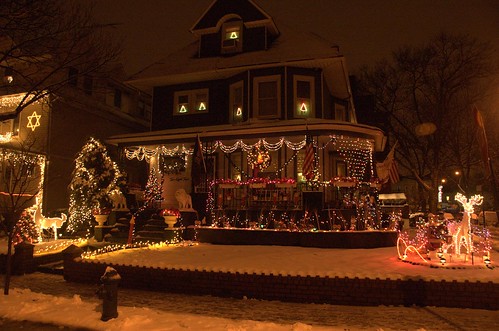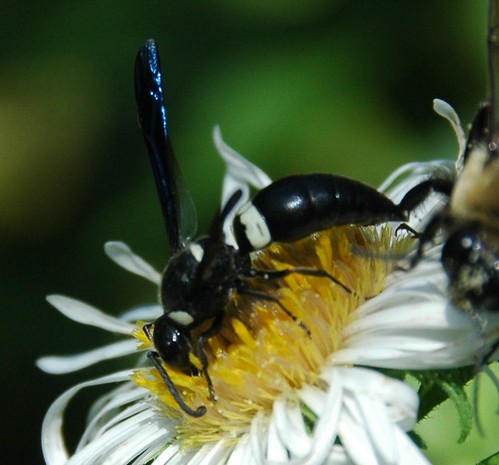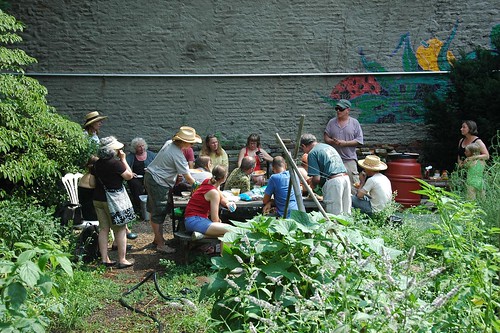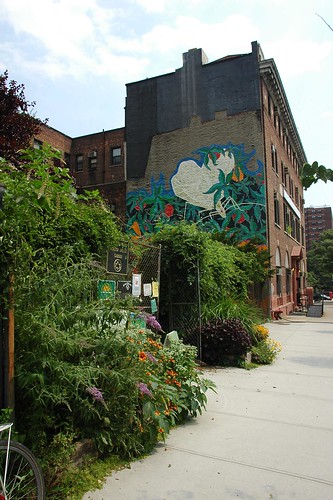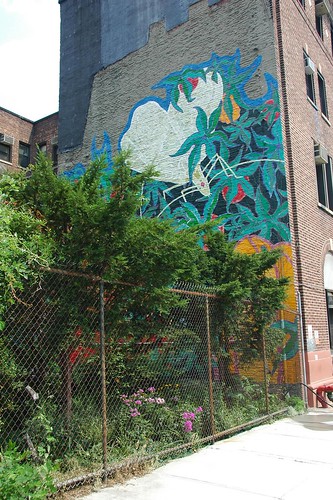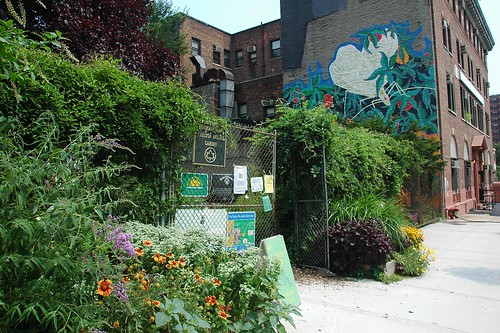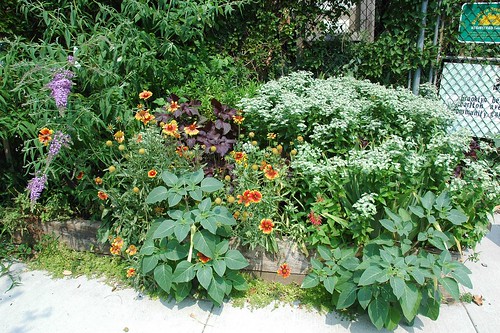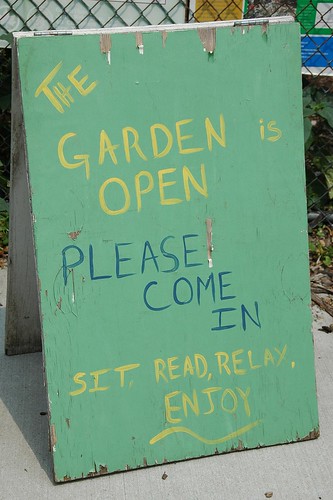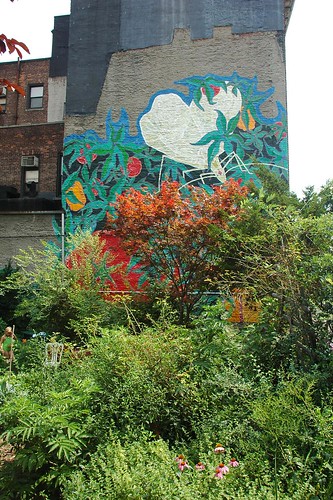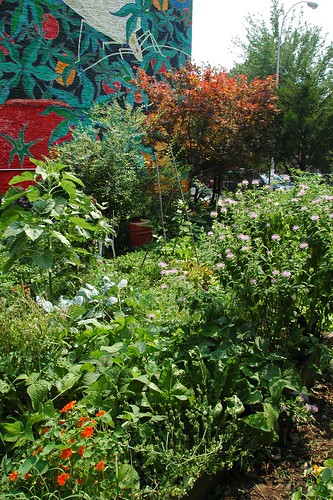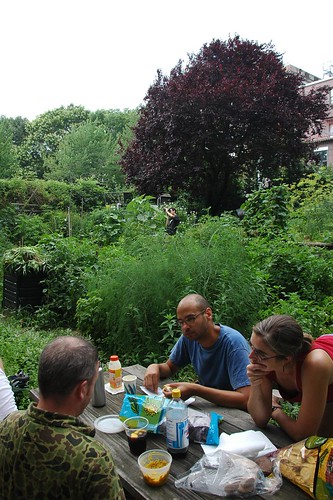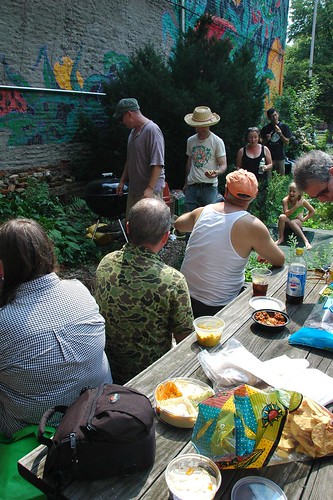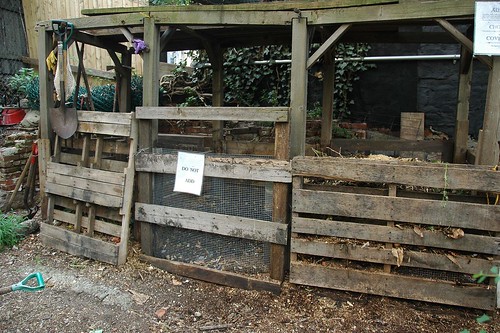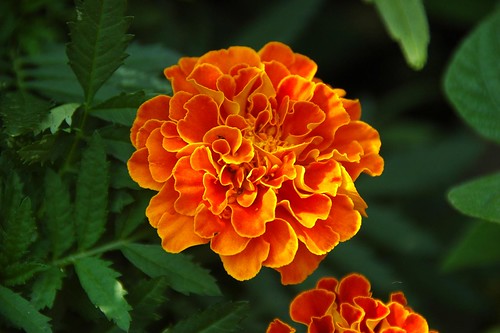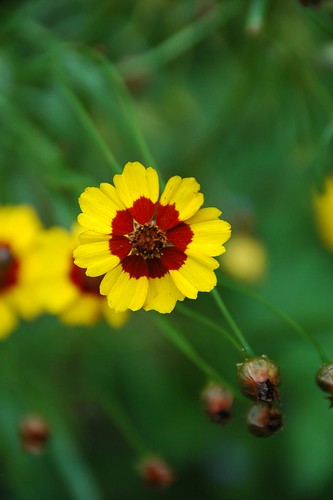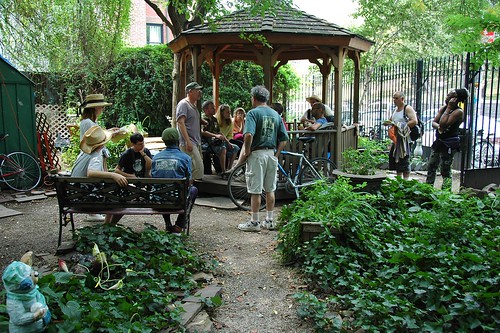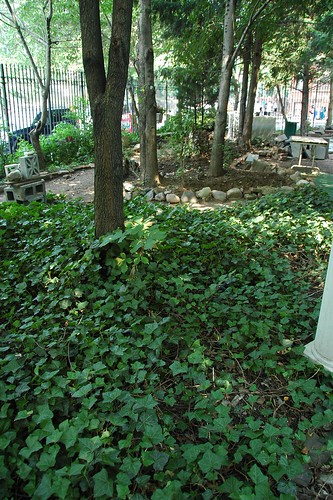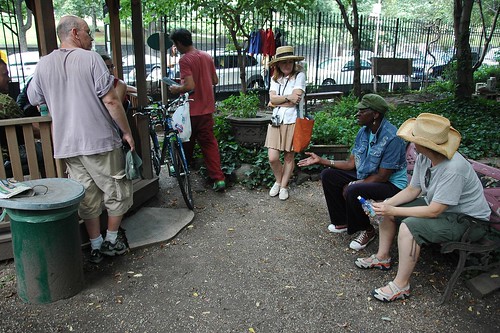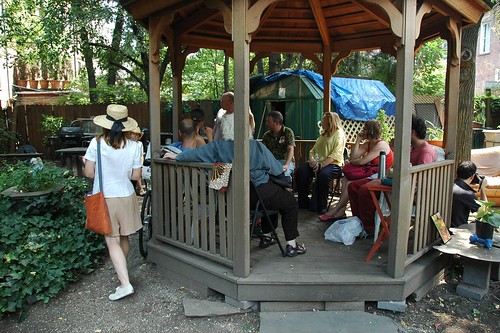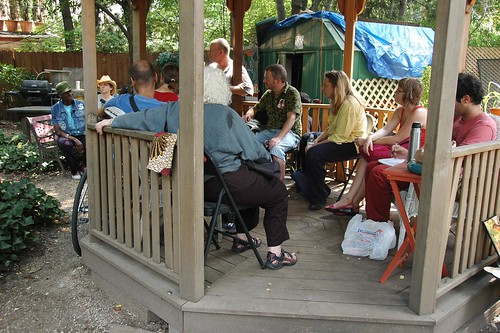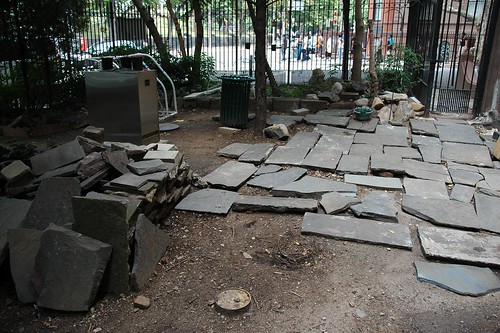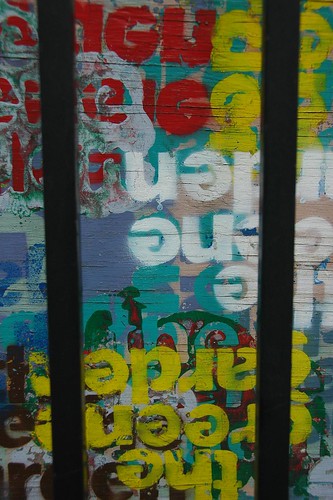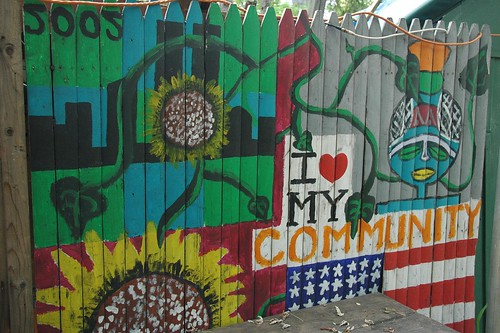Clerodendrum bungei Steud., Rose Glory Bower
This Wednesday I take the final for the Brooklyn Botanic Garden’s Herbaceous Landscape Plant Identification class. [Spelling counts! So please let me know of any typos.] Thursday, I start Urban Garden Maintenance, the last of the eight classes I need for my Certificate in Urban Horticulture from BBG. I started the program in Winter 2008. This is the home stretch; I can’t believe I’m almost done with it.
Unlike the “woodies” class, I already knew most of the plants introduced in the class over the past five weeks. Either I’ve grown them myself sometime over my 30 years of gardening in NYC, or I’ve researched and studied them. However, there have been several, such as the interesting Clerodendrum above, which I’ve never even heard of, or never knew the names of.
This post is the index to my photographic study guide. Plant names are listed by week, in alphabetical order by botanical name within each week. Botanical names are given, corrected for typos, as they were introduced in the class; that’s what we’ll be tested on for the final this Wednesday evening. Plant names are linked to my Flickr Set, where I have one. You can also browse my Flickr Collection for this class, where all the plants are listed by botanical name.
Week 1, 2009.07.22
Callirhoe involucrata, Purple Poppy-Mallow
Observed:
- Callirhoe involucrata, Poppy Mallow
- Epimedium grandiflora ‘Lilafee’, Barrenwort
- Lychnis coronaria, Rose Campion, Ragged Robin
- Podophyllum peltatum, Mayapple
- Polygonatum odoratum var. pluriflorum ‘Variegatum’, Variegated Solomon’s Seal
- Sarracenia sp., Pitcher Plant
- Smilacina racemosa, False Solomon’s Seal
- Verberna bonariensis, Vervain
Omitted (these will not be included on the final):
- Aquilegia canadensis, Columbine. This grows as a Spring ephemeral in our region; none were available to observe at this late date.
- Geranium macrorrhizum, Bigroot Geranium. Omitted primarily for time constraints; also, it was out of bloom by this time of the year. Too bad, since it’s a handsome plant, and there are lots of them around the grounds of BBG.
Week 2, 2009-07-29
We got 11 plants this week to make up for being two short the previous week.
- Acanthus hungaricus, Bear’s Breeches
- Alchemilla mollis, Lady’s mantle
- Amsonia hubrichtii, Blue Star Amsonia, Threadleaf Bluestar
- Asarum splendens, Chinese Wild Ginger
- Begonia grandis, Hardy Begonia
- Borago officinalis, Borage
- Crocosmia ‘Lucifer’, Montbretia
- Helleborus foetidus, Stinking Hellebore
- Heuchera micrantha var. diversifolia ‘Palace Purple’
- Humulus lupulus, Hop Vine
- Pachysandra procumbens, Allegheny Spurge
Week 3, 2009-08-05
- Agastache rupestris, Hyssop
- Asclepias tuberosa, Native Milkweed, Butterfly-Weed
- Belamcanda chinensis, Blackberry Lily, Leopard Flower
- Clerodendrum bungei, Rose Glory Bower, Mexican Hydrangea
- Echinacea purpurea, Purple Coneflower
- Foeniculum vulgare ‘Purpureum’, Bronze/Copper Fennel
- Macleaya cordata, Plume Poppy, Tree Celandine
- Passiflora caerulea, Maypop, Passionflower
- Stachys byzantina, Wooly Lamb’s Ears
- Thalictrum rochebrunianum, Meadow Rue, Lavender Mist
Week 4, 2009-08-12
This was the only themed week of the class, consisting solely of grasses, ferns and fern allies.
Pennisetum alopecuroides, Fountain Grass
- Adiantum pedatum, Northern/Eastern Maidenhair Fern
- Asplenium scolopendrium, Hart’s-Tongue Fern
- Athyrium nipponicum ‘Pictum’, Japanese Painted Fern
- Blechnum spicant, Deer Fern
- Calamagrostis x acutiflora ‘Karl Foerster’, Feather Reed Grass
- Chasmanthium latifolium, Northern Sea Oats, River Oats, Indian Wood-Oats
- Equisetum hyemale, Scouring Rush, Horsetail
- Hakonechloa macra, Japanese Forest Grass
- Pennisetum alopecuroides, Fountain Grass
- Polystichum polyblepharum, Tassel/Bristle Fern
Week 5, 2009-08-19
The last class before the in-class final.
Angelica gigas, Purple Angelica
- Anemone x hybrida, Japanese Anemone, Windflower
- Angelica gigas, Purple Angelica
- Colocasia esculenta ‘Illustris’, Taro, Imperial Taro, Dasheen, Poi, Elephant Ears
- Convallaria majalis, Lily of the Valley
- Dicentra eximia, Wild/Fringed/Eastern Bleeding-Heart
- Eupatorium dubium, Little Joe Pye Weed
- Euphorbia dulcis ‘Chameleon’, Mole Spurge
- Hibiscus coccineus, Scarlet Rose Mallow, Swamp Mallow
- Opuntia humifusa, Eastern Prickly Pear Cactus
- Tricyrtis hirta, Toad Lily

